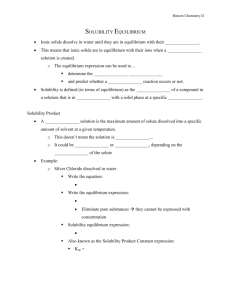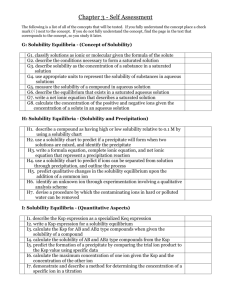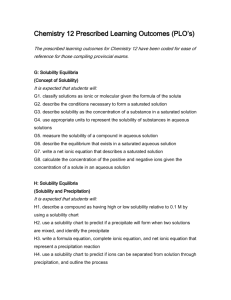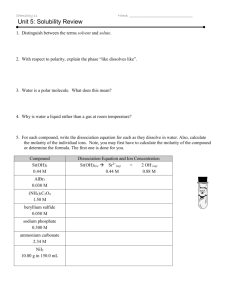Solubility Equilibria unit LOs
advertisement
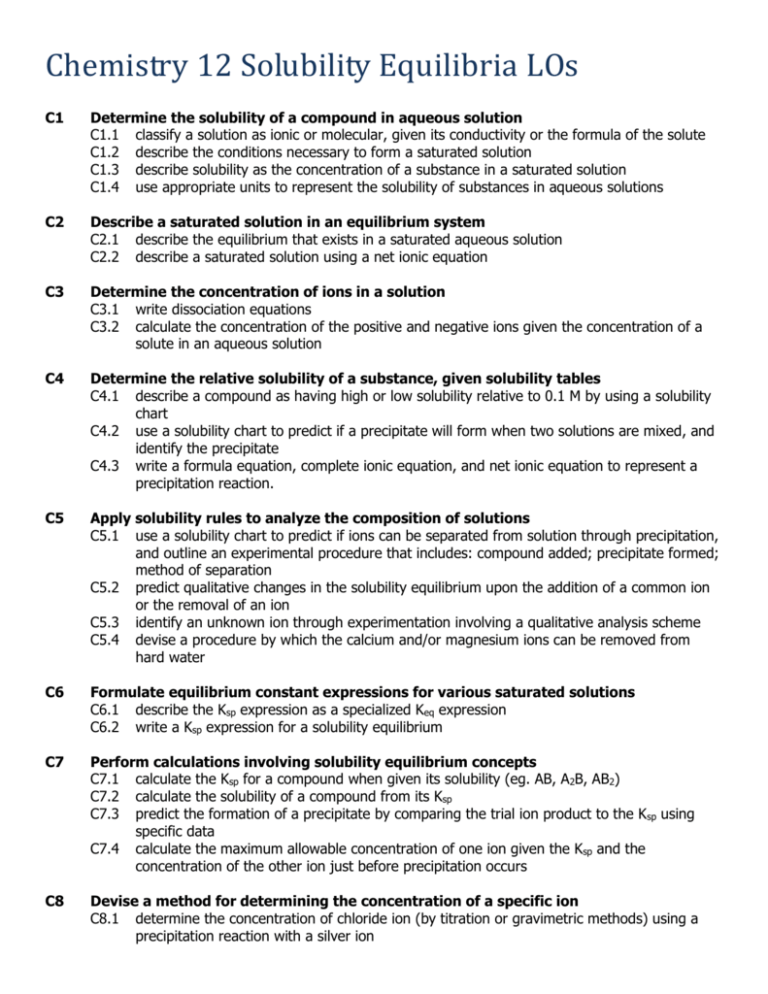
Chemistry 12 Solubility Equilibria LOs C1 Determine the solubility of a compound in aqueous solution C1.1 classify a solution as ionic or molecular, given its conductivity or the formula of the solute C1.2 describe the conditions necessary to form a saturated solution C1.3 describe solubility as the concentration of a substance in a saturated solution C1.4 use appropriate units to represent the solubility of substances in aqueous solutions C2 Describe a saturated solution in an equilibrium system C2.1 describe the equilibrium that exists in a saturated aqueous solution C2.2 describe a saturated solution using a net ionic equation C3 Determine the concentration of ions in a solution C3.1 write dissociation equations C3.2 calculate the concentration of the positive and negative ions given the concentration of a solute in an aqueous solution C4 Determine the relative solubility of a substance, given solubility tables C4.1 describe a compound as having high or low solubility relative to 0.1 M by using a solubility chart C4.2 use a solubility chart to predict if a precipitate will form when two solutions are mixed, and identify the precipitate C4.3 write a formula equation, complete ionic equation, and net ionic equation to represent a precipitation reaction. C5 Apply solubility rules to analyze the composition of solutions C5.1 use a solubility chart to predict if ions can be separated from solution through precipitation, and outline an experimental procedure that includes: compound added; precipitate formed; method of separation C5.2 predict qualitative changes in the solubility equilibrium upon the addition of a common ion or the removal of an ion C5.3 identify an unknown ion through experimentation involving a qualitative analysis scheme C5.4 devise a procedure by which the calcium and/or magnesium ions can be removed from hard water C6 Formulate equilibrium constant expressions for various saturated solutions C6.1 describe the Ksp expression as a specialized Keq expression C6.2 write a Ksp expression for a solubility equilibrium C7 Perform calculations involving solubility equilibrium concepts C7.1 calculate the Ksp for a compound when given its solubility (eg. AB, A2B, AB2) C7.2 calculate the solubility of a compound from its Ksp C7.3 predict the formation of a precipitate by comparing the trial ion product to the Ksp using specific data C7.4 calculate the maximum allowable concentration of one ion given the Ksp and the concentration of the other ion just before precipitation occurs C8 Devise a method for determining the concentration of a specific ion C8.1 determine the concentration of chloride ion (by titration or gravimetric methods) using a precipitation reaction with a silver ion
